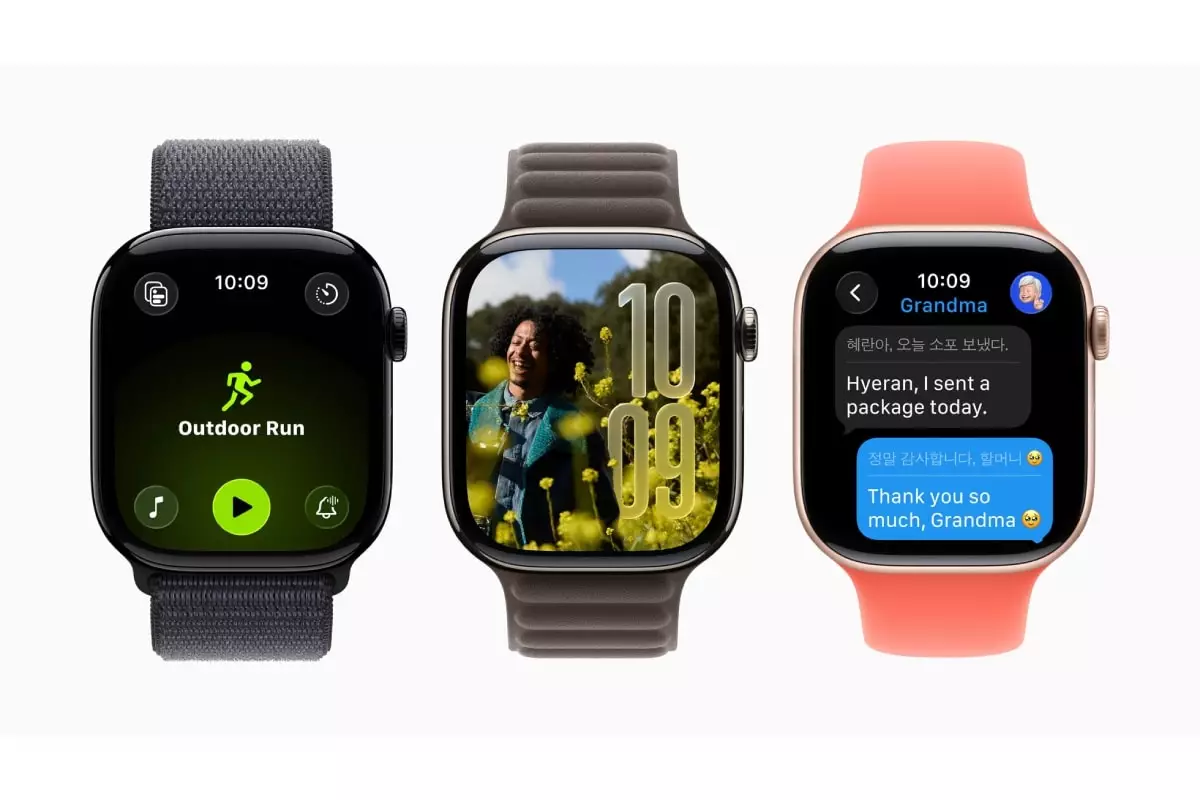In the world of wearable technology, Apple has perpetually stood as the juggernaut, setting benchmarks for innovation drawn by their relentless pursuit of excellence. The recent unveiling of watchOS 26 at WWDC 2025 has sparked a debate that goes beyond mere feature upgrades; it questions whether Apple is trailblazing towards a revolutionary future or merely refining past successes. With its sleek Liquid Glass design and the introduction of features like the AI-enhanced Workout Buddy, Apple appears poised to win over users anew. However, as we dissect these advancements, one has to wonder if these enhancements genuinely serve their purpose or simply enhance a comfortable status quo that has grown all too predictable.
The Flamboyance of Design Does Not Mask Functional Redundancy
Let’s first address the brave new look with the Liquid Glass design. It’s undeniably aesthetically pleasing, featuring a sleek visual language that modernizes the watch interface. But one must ask: Does an appealing design promise a substantial improvement in functionality? Features such as the Smart Stack and revamped Control Centre parallel existing functionalities rather than introducing groundbreaking innovations. Users might be enamored by the fluid visuals, yet at their core, these enhancements still serve similar roles to what we have seen before. The risk here is that while Apple strives to dazzle, it inadvertently risks coming off as merely cosmetic in its approach, emphasizing style over substance.
The Workout Buddy: A Blessing or a Clever Distraction?
Now, let’s pivot to arguably the most talked-about feature: the AI-powered Workout Buddy. This attempt to personalize the fitness experience offers promising capabilities by leveraging user data to deliver customized insights. At face value, it may seem revolutionary—a personalized coach right on your wrist providing real-time feedback and motivation during workouts. However, there’s a graver concern about the implications of relying too heavily on AI for personal health strategies. Is the system genuinely enhancing user experience, or is it fostering reliance on data and algorithmic predictions that could reduce one’s intrinsic motivation? Does it encourage a culture of comparison, where users are pitted against their past selves under the constant watch of an algorithm ranking personal efforts?
While the intention behind the Workout Buddy could be to instill motivation, it raises ethical questions regarding the commodification of health and the psychological burden that comes with monitoring one’s every move. The fitness world often echoes with messages of empowerment, yet watchOS 26 subtly tells a different story where value is determined not just by sweat but also by algorithmic efficiency derived from user data.
The Smart Stack Dilemma: Advances or Stagnation?
Equally noteworthy is the Smart Stack addition, with its enhanced predictive algorithms that strive for contextual accuracy. Apple promises that this update will improve users’ experience by understanding routine behaviors more deeply. In practicality, however, does this generate anticipation or merely dilute the experience further into the realm of surveillance? While the upgraded Smart Stack hints may seem beneficial, they can potentially tune the device to a level of over-familiarity that risks alienating more adventurous users. The wearables should empower spontaneity, yet these enhancements often seem geared toward streamlining every action, making one question the balance between user friendliness and redundancy.
Global Context: The Ambivalent Nature of Technology
The incorporation of features like Live Translation in Messages is undoubtedly a welcome development that reflects Apple’s ambition to improve communication on a global scale. However, there’s an unsettling performance aspect as well. It’s great that Apple Watch is offering translation support and smart replies, but the discussion here should pivot towards the existential implications of our reliance on such technology. Are we ensuring inclusivity through innovation, or are we inadvertently displacing genuine human interaction with rapid-fire alerts and instant translations?
Accessibility as a Selling Point: Genuine Advocacy or Market Strategy?
Moreover, while introducing accessibility features such as Live Listen and improved note-taking capabilities is commendable, this endeavor must be approached critically. Are these features designed out of a genuine commitment to serve users with different needs, or are they marketing strategies to appeal to a broader audience? While bridging the accessibility gap is crucial, the onus still falls on tech giants to maintain a consistent and authentic narrative around these developments rather than treating them as just another box to check on a product enhancement list.
In the end, watchOS 26 positions itself as a patchwork of shimmering innovation juxtaposed with an unsettling predilection toward refinement rather than a radical departure from previous iterations. The hope of many lies in the notion that Apple remains committed to its identity as an innovator. Yet, the real challenge will be how they navigate their position at the center of the technology ecosystem, ensuring that they break barriers rather than simply rehashing the old Playbook with a flashy new cover.

